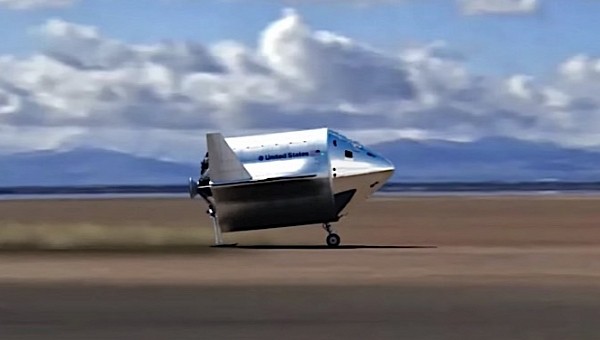Even if Apollo was not America’s first space exploration program and, as it turned out, not even the most defining one from a scientific perspective, it is perhaps the most important to date as it’s the only one that placed human boots on the surface of another world.
Initiated in 1961, Apollo landed the first humans on the Moon just eight years later, and then continued to do so until 1972. It is only now, in our times, that America is trying to make a comeback to our planet’s satellite with the Artemis program.
Apollo was a pioneering effort in many ways, and pretty much all the tech it needed to succeed had to be created from scratch. Impressive as it was back then, the technology still looks primitive by today’s standards. And it even seemed so to some of the great minds of the 1960s and 1970s.
One of the biggest challenges space engineers faced back then was the fact almost none of the hardware developed for the task at hand was reusable. That drove operating costs up, and it also took a lot of time to build new rockets and the modules needed for missions.
Contrary to popular belief, reusable rockets and ships are not modern inventions, because people were considering them even 60 years ago. It was the level of technological advancement that stopped them from becoming a reality, at least until the Space Shuttle got here in 1972, and even then it was the only ship capable of flying time and again.
Rockwell International was one of the companies that dreamed of reusable spaceships even before the first Moon landing. In 1967, it applied for patents concerning an aerospace vehicle that could be used this way.
As per the details of the request, we are talking about a machine comprising a forward crew compartment and a service module. It would have been capable of flying a mission like all spaceships do, launched on top of a rocket (in this case, the Saturn), going about its business in orbit and elsewhere, and then coming back to Earth. Unlike all the other spaceships of its time, this one would have been “reusable with minimum refurbishment.”
Like many other such ships dreamed up back then, this one didn’t get to fly in the real world, and remained only someone’s dream on a piece of paper. To give us a taste of what it would have looked like, space animation specialist Hazegrayart compiled a 6-minute video showing such a design in action.
For this exercise, the hardware is called Apollo Command and Service Module Shuttle, and it looks not unlike the real modules used during the Apollo missions, with a blend of Boeing Starliner and SpaceX Starship.
We get to see it reach the Moon’s orbit, but not actually land there. It then floats above our planet once more before re-entering and gliding, unpowered, until landing in a desert somewhere like a sort of half-ship and a testimony to an alternative past that never came to be.
Apollo was a pioneering effort in many ways, and pretty much all the tech it needed to succeed had to be created from scratch. Impressive as it was back then, the technology still looks primitive by today’s standards. And it even seemed so to some of the great minds of the 1960s and 1970s.
One of the biggest challenges space engineers faced back then was the fact almost none of the hardware developed for the task at hand was reusable. That drove operating costs up, and it also took a lot of time to build new rockets and the modules needed for missions.
Contrary to popular belief, reusable rockets and ships are not modern inventions, because people were considering them even 60 years ago. It was the level of technological advancement that stopped them from becoming a reality, at least until the Space Shuttle got here in 1972, and even then it was the only ship capable of flying time and again.
Rockwell International was one of the companies that dreamed of reusable spaceships even before the first Moon landing. In 1967, it applied for patents concerning an aerospace vehicle that could be used this way.
As per the details of the request, we are talking about a machine comprising a forward crew compartment and a service module. It would have been capable of flying a mission like all spaceships do, launched on top of a rocket (in this case, the Saturn), going about its business in orbit and elsewhere, and then coming back to Earth. Unlike all the other spaceships of its time, this one would have been “reusable with minimum refurbishment.”
Like many other such ships dreamed up back then, this one didn’t get to fly in the real world, and remained only someone’s dream on a piece of paper. To give us a taste of what it would have looked like, space animation specialist Hazegrayart compiled a 6-minute video showing such a design in action.
For this exercise, the hardware is called Apollo Command and Service Module Shuttle, and it looks not unlike the real modules used during the Apollo missions, with a blend of Boeing Starliner and SpaceX Starship.
We get to see it reach the Moon’s orbit, but not actually land there. It then floats above our planet once more before re-entering and gliding, unpowered, until landing in a desert somewhere like a sort of half-ship and a testimony to an alternative past that never came to be.
















